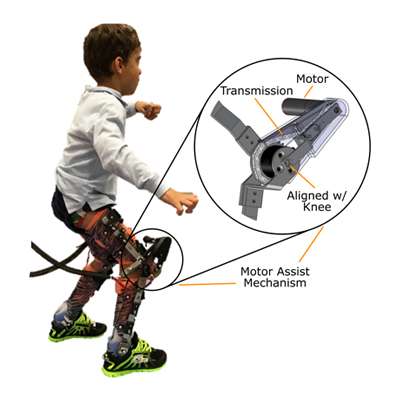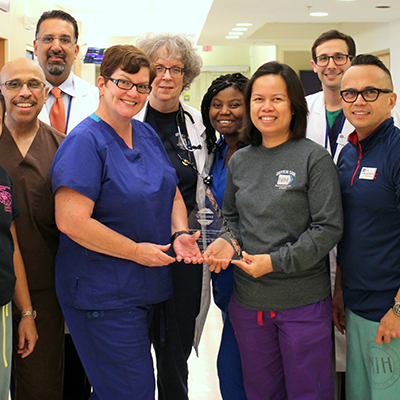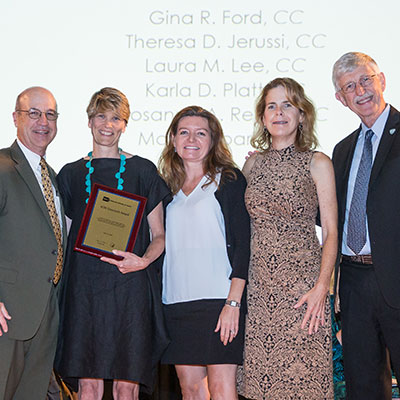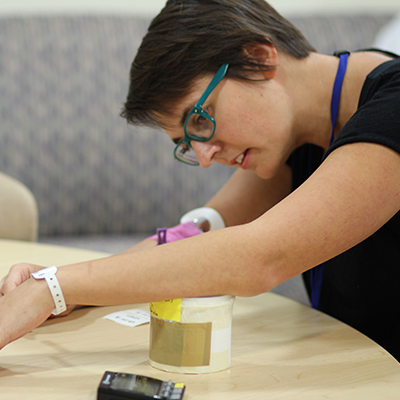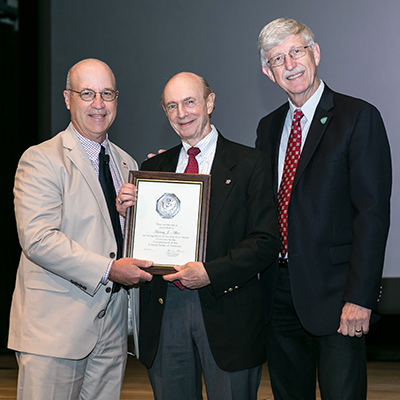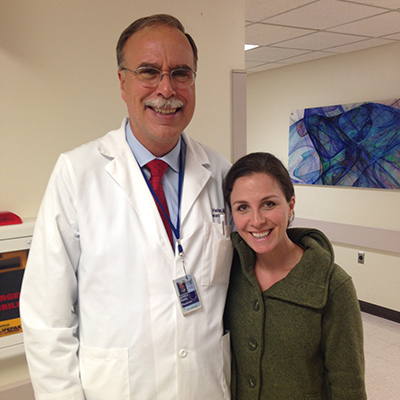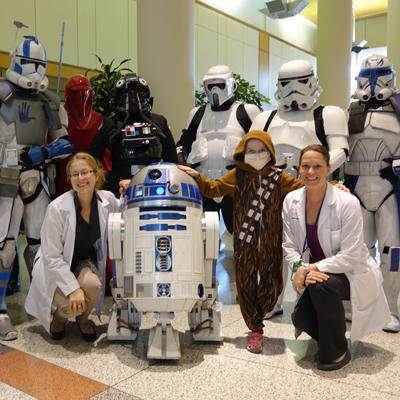Robotic exoskeleton offers potential new approach to alleviating crouch gait in children with cerebral palsy
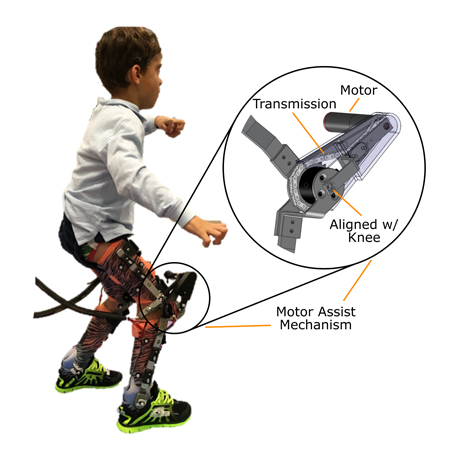
With a motor, sensors and electronic-technology-powered brace wrapped around their legs, several pediatric patients participating in a Rehabilitation Medicine clinical trial looked like characters from the movies Iron Man or Transformers — and more importantly, they felt like the superheroes they resembled. The patients, all of whom have cerebral palsy, walked with crouch gait, or excessive bending of the knees. In order to improve their walking, researchers led by staff scientist Dr. Thomas Bulea, created the first robotic exoskeleton specifically designed to treat crouch gait in children with cerebral palsy by providing powered knee extension assistance at key points during the walking cycle.
Crouch gait is a common and debilitating condition in children with cerebral palsy. Despite conventional treatments (including muscle injections, surgery, physical therapy and orthotics), crouch gait can lead to a progressive degeneration of walking function, ultimately resulting in the loss of walking ability in roughly half of adults with the disorder.
Bulea and his team are among the first to create a device like this for children.
"To date most wearable exoskeletons are intended for adults with paralysis, with the exoskeleton replacing the lost function of the user's muscles to restore walking ability. Rather than restoring lost function, our exoskeleton was designed to change the way children with crouch gait from cerebral palsy walk."
The exoskeleton helps children with crouch by tracking the natural movement patterns of their limbs and supplying motorized assistance for knee extension at the appropriate times of the walking cycle.

The majority of the children, ages 5 to 19, were able to improve their knee extension by up to 37 degrees while wearing the brace. According to Bulea, it was the first time in their life some of the parents had seen their kids walk while standing that tall.
"Our results show that the exoskeleton can safely and effectively change the posture of a child while they wear it. The exciting part is that the children's muscle activity was preserved when they walked in this new way with the exoskeleton, suggesting that long-term use of this device might be a viable way to train a new walking pattern in this population."
Like all the research done at the NIH Clinical Center, the team in the Rehabilitation Medicine Department hopes that after the proper validation of the science, the technology will move out of the lab and into clinics amongst the general public.
"Ultimately, our goal is to have this device reach as many children who can benefit as possible," Bulea concluded. "We are also planning studies in children with more severe gait deficits from cerebral palsy who are therefore at elevated risk for declining mobility, as well as in other disorders such as spina bifida or muscular dystrophy."
Bulea's research was published in August in Science Translational Medicine. View more details.
